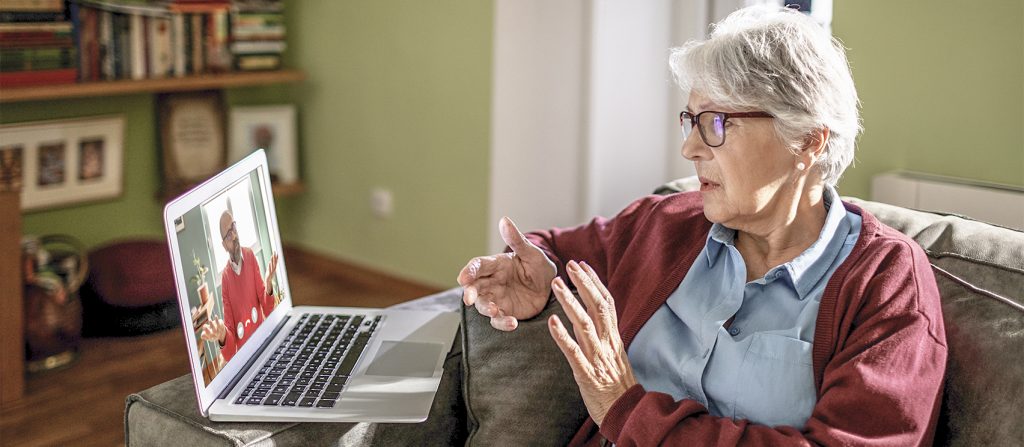Change and new advances in technology are often exciting and full of the opportunity to create new connections on many levels. Think of social media and Instagram and how wonderful it is to connect daily to
people whose interests one shares. Fortunately, many therapists have embraced the opportunity that technology offers in the form of telehealth.
Telehealth is the delivery of counseling and mental health services via electronic information and telecommunications in the form of videoconferencing, the internet, streaming media, smartphones, therapy- related apps that are compliant with the Health Insurance Portability and Accountability Act rules. Audio-only services are typically not reimbursed by insurers but are still supported by many in the therapy community, as phone-based therapy sessions can reach lower-resource populations. The mode of delivery is secondary to making certain that all populations have access to the therapy and counseling services they require.
In actuality, telehealth has been practiced in the field of psychology since the 1960’s. Hard to reach populations and immobilized patients have long relied on telehealth services to provide therapy for specialized care. Recently the American Psychological Association has introduced “Guidelines for the Practice of Telepsychology” for the provision of psychological services, further solidifying the delivery of mental health services through technological means as a viable,
alternative to traditional, in-person mental health counseling and therapy. In 2020, the Covid-19 pandemic created a world that was forced to learn to embrace the “virtual” delivery of services. From meetings with work colleagues to doctor appointments to connecting our children to their classrooms, remote video conferencing became the norm for the receipt of many essential services.
Research to date on telehealth services for therapy has focused on videoconferencing and its effectiveness juxtaposed with in person therapy sessions. Promising results have been revealed regarding telehealth and cognitive-behavioral therapy for reducing depressive symptoms, in both person-to-person and group therapy.1
The benefits of telehealth are many, both for the client and the therapist. The use of technology reduces barriers to access to care, be it due to travel expectations or motivational barriers from mental health issues. Telehealth also eliminates delays in care when immediate attention is needed. As telehealth becomes more ubiquitous, a reduction in overall healthcare costs is possible. And finally, being able to receive therapy in the comfortable, natural environment of one’s home may lead to better outcomes.
Due to the prolific presence of videoconferencing during the age of Covid-19, many academic studies have emerged supporting telehealth, particularly for mental health services. Studies reveal telehealth is just as effective as in-person therapy, with the added benefit of
having a better retention rate for individuals continuing with their therapy.2 It is found that telehealth provides a safe, private way to receive therapy in a way that still allows for a person-centered delivery of care.
Telehealth services are not just limited to therapy sessions. The ability to provide supplemental information is also a tremendous benefit of implementing technology into the therapy setting. Client self-management programs that allow patients to assume more responsibility for and control over their own care. The provider website provides client education, monitoring, clinician intervention and e-mail. The benefit: more efficient use of provider resources and time along with improved client relations. Radically re-engineered delivery networks built around end-to- end information flow rather than disjointed processes in which information can be overlooked or not delivered. Telehealth allows a therapist to connect to their patients in a way that overcomes many barriers to care, particularly in this time of a global pandemic. With the aid of technology, new connections can be made, patient visits maintain regular scheduling and communication remains open at all levels of the client/therapist relationship.



